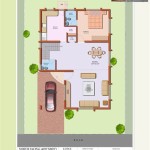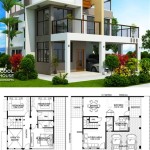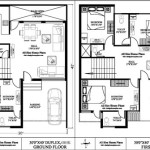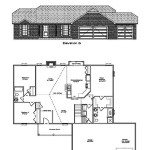House Renovation Floor Plans: A Comprehensive Guide
Renovating a house is a significant undertaking. A well-defined floor plan serves as the crucial foundation for a successful renovation project. It provides a visual roadmap, guiding the entire process from demolition to the final touches. A comprehensive floor plan minimizes costly mistakes, ensures efficient use of space, and helps realize the homeowner's vision for their renovated home.
The initial step in developing renovation floor plans involves a thorough assessment of the existing structure. This assessment should include precise measurements of every room, noting the location of windows, doors, plumbing fixtures, and electrical outlets. Understanding the existing layout is paramount for developing a realistic and functional renovation plan. This assessment phase may also involve consultations with structural engineers or other specialists, particularly if the renovation involves significant structural changes.
Defining the scope of the renovation is the next crucial step. Homeowners should clearly outline their goals for the renovation project. Are they aiming to improve functionality, update aesthetics, increase living space, or a combination of these? Clearly defined objectives will inform the design choices and ensure that the final floor plan aligns with the homeowner's vision. This is also the stage where budget considerations should be carefully evaluated.
Conceptualizing the desired layout is where creativity and practicality intersect. Homeowners may explore different spatial configurations, considering factors like traffic flow, natural light, and the intended use of each space. This phase often involves sketching potential layouts or using online design tools. It's advisable to explore various options before settling on a final design. Considering future needs and potential resale value can also be beneficial during this stage.
Consulting with architectural professionals is highly recommended, especially for complex renovations. Architects bring expertise in building codes, structural integrity, and design principles. They can translate the homeowner's vision into a technically sound and aesthetically pleasing floor plan. They can also help navigate the often-complex permit process and ensure compliance with local regulations. Architects can provide valuable insights into material selection and construction techniques.
Incorporating building codes and regulations is a non-negotiable aspect of any renovation project. Floor plans must adhere to local building codes, addressing aspects like fire safety, accessibility, and ventilation. Failure to comply with these regulations can lead to delays, fines, and even legal issues. Working with qualified professionals ensures that the renovation project meets all necessary requirements.
Detailed drawings and specifications are essential for effective communication with contractors. The final floor plan should include accurate measurements, detailed specifications for materials, and clear annotations for electrical and plumbing systems. This level of detail minimizes misunderstandings, ensures accurate cost estimations, and facilitates a smooth construction process. Detailed drawings also help contractors understand the scope of work and submit accurate bids.
Utilizing design software can significantly enhance the floor planning process. Sophisticated software allows for 3D visualizations, virtual walkthroughs, and accurate measurements. These tools facilitate better communication between homeowners, architects, and contractors, enabling everyone to visualize the final product and identify potential issues before construction begins. Some software even allows for integration with cost estimation tools, providing a more accurate budget projection.
Considering lighting and ventilation is crucial for creating comfortable and healthy living spaces. Floor plans should optimize natural light sources and incorporate appropriate artificial lighting fixtures. Adequate ventilation must also be addressed to ensure proper air circulation and prevent moisture buildup. These factors contribute significantly to the overall comfort and well-being of the occupants.
Accessibility and universal design principles should be considered, especially for renovations intended for long-term occupancy. Designing spaces that accommodate individuals with disabilities or mobility limitations ensures inclusivity and enhances the long-term value of the property. This might include wider doorways, accessible bathrooms, and ramps.
Budgeting and cost estimation are integral parts of the floor planning process. Developing a realistic budget based on the chosen materials, labor costs, and potential unforeseen expenses is essential. Accurate cost estimation helps prevent financial overruns and ensures the project stays within the allocated budget. Working closely with contractors and obtaining multiple bids can help refine the budget and ensure cost-effectiveness.
Material selection plays a significant role in the overall aesthetic and functionality of the renovated space. The floor plan should specify the type of flooring, cabinetry, countertops, and other finishes. Choosing durable and sustainable materials enhances the longevity and value of the renovation. Considering the maintenance requirements of different materials is also an important factor.
Flexibility and adaptability should be factored into the design. Life circumstances and needs can change over time, so incorporating flexibility into the floor plan can be beneficial. This might involve designing spaces that can serve multiple functions or allowing for future expansion or modifications.
Reviewing and revising the floor plan is an iterative process. Thoroughly reviewing the plan with all stakeholders, including architects, contractors, and homeowners, is crucial before finalizing. This allows for identifying and addressing any potential issues or overlooked details. Revisions and adjustments are often necessary to ensure the plan meets all requirements and reflects the homeowner's vision.

Design Ideas For A Home Renovation Architecture

Slideshow Soho Row House Renovation Dwell Remodeling Floor Plans

5 Stages Of Remodeling The House Designers

Sample Open Floor Plan Renovation Pegasus Design To Build

Changing Your Home Floor Plan Extensions Addition Costs

Design Ideas For A Home Renovation Architecture

Sample Open Floor Plan Renovation Pegasus Design To Build

Interior Design Floor Plan Before After Reed

Case Study How To Fix A Bad Ranch Floor Plan Midmod Midwest

An Nyc Grandpa Renovation Story Access Style Space Sweeten








